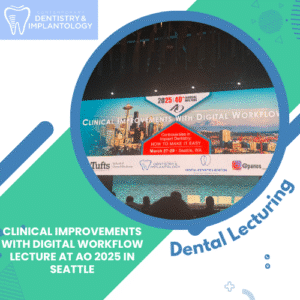
Clinical Improvements with Digital Workflow Lecture at AO 2025 in Seattle
Clinical Improvements with Digital Workflow Lecture at AO 2025 in Seattle Sharing Global Expertise in Digital Workflows from Peabody to Seattle Lecture Details Dr. Panos

Lecture at International Implantology Event in Thailand
Lecture at International Implantology Event in Thailand Showcasing Digital Full-Arch Implant Solutions at the ITI Study Club in Phuket Table of Contents A Global Leader

Restore Your Smile with All-on-4 Dental Implants in Peabody, MA
Are you struggling with missing teeth or the challenges of traditional dentures? Missing teeth can affect not only your ability to chew and speak, but

